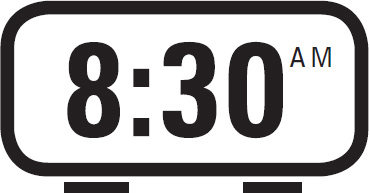

You’re out the door! You did it! Now if you could only remember where you’re going … But if you can depend on your smartphone to tell you to “turn left in six feet” when walking from your kitchen to the restroom, is your ability to remember driving directions superfluous? Let’s all hope the answer is yes, ’cause we’re sure as heck losing this ability. Studies show that, due in large part to what are called “egocentric” maps—ones that know where you are—the human brain is losing its ability to navigate by landmarks and compass directions.
This ability depends on something called “place” and “grid” cells. In 2014, the discovery of these cells earned their discoverers the Nobel Prize in Medicine or Physiology. In 1971 John O’Keefe discovered the brain cells that tell us where we are, and in 2005 the husband-and-wife team of May-Britt and Edvard Moser discovered the cells that help us get where we’re going. When you drive to work or school you use both these kinds of cells—or at least you used to. Here’s how they work. O’Keefe’s “place cells” are nerves in the hippocampus that are active when you are in a specific position—your hippocampus holds little maps of the places you know, and each place on those maps corresponds with a different little cluster of hippocampal nerve cells that fire together. When you go to a new place, you construct a new mental map and your brain assigns different clusters of nerve cells to represent these places in your hippocampus. Theoretically, though not yet practically, we should be able to look inside a person’s hippocampus and, from the pattern of nerve activation, discover where that person is located.
The Mosers picked up where O’Keefe left off and started their research with a simple question: what is connected to the hippocampus and its place cells? To find the answer, they looked inside the brains of rats as they navigated mazes. Near the hippocampus is something called the entorhinal cortex, which you can remember because it sounds like an operation that would be performed inside a large, single-horned African odd-toed ungulate. It’s been known that among the functions of the entorhinal cortex (EC) are things like monitoring the direction in which your head is pointing and helping to form conscious memories of the places you’ve been; it’s an important connection between your hippocampus and your prefrontal cortex, the home of your consciousness.
When the Mosers watched the ECs of maze-running rats, they saw something very cool: as rats would pass one marker and then the next and the next, certain cells within the EC would flash. These cells, it turned out, represented points on a hexagonal grid “similar to the hexagonal arrangement of holes in a beehive,” notes the Nobel Foundation. By lighting up in certain patterns, the grid could keep track of how an animal was moving and could allow animals to plan the steps they should take to get from one place cell “here” to another place cell “there.” The Mosers called these “grid cells.”
We can see a version of these grid cells in the brains of humans playing video games. Using microfine electrodes, researchers are able to record the firings of single neurons. Just like in rats running a maze, when researchers look at the spittings of a single neuron in the entorhinal cortexes of humans playing video games, they can tell, for example, if the human is making a character run clockwise or counterclockwise.
So if you want to get from your house to work, place cells will tell you where you are and grid cells will tell you how you are traveling.
Interestingly, one way to ensure that your brain’s GPS remains accurate is to get enough sleep. Imagine that a rat activates a sequence of place cells while running a maze. When sleeping, the rat’s brain will activate these same cells in the same order as it consolidates this spatial memory. The next day, rats that have been allowed to sleep navigate mazes they remember more successfully than rats that haven’t slept.
Another key to navigating without your smartphone is to navigate without your smartphone. Again, it’s about the hippocampus. Studies show that London cabbies who are forced to memorize reams of spatial information as part of the licensing test known as The Knowledge have a higher than average volume of gray matter in their hippocampi. And people who navigate by the stimulus-response strategy of their phone’s GPS have smaller hippocampi than people who call up a mental map while navigating. Not only does texting while driving make you more likely to smash into things (more on that later), but letting your smartphone tell you how to get where you’re going may mean that your brain becomes less able to find where you’re going without it.


Unlike London cabbies, you don’t have to remember the spatial layout of “every possible route through the city as well as memorizing landmarks and points of interest, museums, parks, police stations, churches, theatres and schools and not just the famous landmarks like Buckingham Palace and Nelson’s Column” (from theknowledge taxi.co.uk). But it’s nice to be able to get from home to the coffee shop without depending on your phone’s blue dot. If you’ve temporarily misplaced this ability (i.e., you’ve lost your phone), try some training with the Visual Patterns Test. It’s like Simon Says, but you’ll have to make your own patterns. Copy and cut out the boxes on this page (or make your own on graph paper), and then place these boxes in long strings of patterns. By tapping upper right, upper left, lower right, and lower left, how many boxes in a row can you reproduce before you forget what comes next?